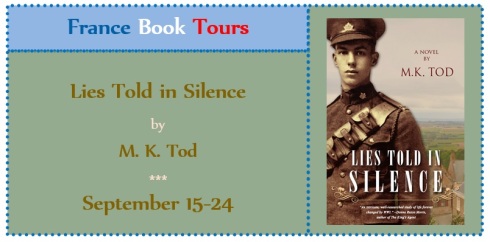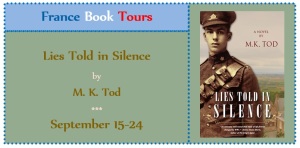The Consulting Detective Trilogy Part II: On Stage by Darlene A. Cypser. Foolscap & Quill, 2017.*
The art of disguise and role-playing serve Sherlock Holmes very well in the conduct of his investigations, playing a significant part in several of his most famous cases . In A Scandal in Bohemia, for example, Holmes assumes two different disguises, appearing first as a drunken stable groom and later as a clergyman, during his efforts to recover a compromising photograph of the King of Bohemia from the shrewd Irene Adler. Adler herself takes on the disguise of a youthful boy to walk past Holmes unnoticed and ultimately defeat his purposes–earning his respect as a worthy adversary. Holmes clearly enjoyed assuming other identities, and practised their effects even on his friends. In The Empty House, Holmes staged a dramatic reveal indeed, to apprise his friend Dr Watson that he, Holmes, had in fact survived the seemingly fatal scuffle with Prof Moriarty at the Reichenbach Falls (in The Final Problem). He arrived at Watson’s study disguised as an eccentric old bookseller, bent in body, and when Watson turned away for an instant, the old man straightened to his full height, becoming Sherlock once again. Watson fainted, as he reports it, “for the first and the last time in my life.” Holmes was repentant, regretting the shock he had caused by his “unnecessarily dramatic reappearance.” When Watson recovered, Holmes recounted his year incognito as the peripatetic Norwegian Sigerson, taking obvious pleasure in assuming yet another identity.
How did Holmes acquire these skills? Where did he learn to transform himself so thoroughly and stay in character? Sherlockian, filmmaker, and historian Darlene Cypser answers these questions brilliantly in her new novel, The Consulting Detective Trilogy Part II: On Stage. Although it is the second part of a trilogy, it is really the third book in her ongoing series of novels on the evolution of young Sherlock Holmes as a consulting detective. This multipart bildungsroman begins with The Crack in the Lens, in which seventeen-year-old Sherlock first matches wits with Prof Moriarty, the mathematics tutor hired by the boy’s demanding father. Sherlock’s romance with a Violet Rushdale and an ensuing tragedy trigger psychological trauma, which will have long-lasting effects on his life and personality; this period also witnesses the young man’s growing resolve to craft his own career as a consulting detective–a decision that begins to open what will be a permanent rift with his father. Sherlock means to acquire all the skills necessary for the science of detection, and if this includes going to University for some formal education in the chemical and other sciences, he is willing to accede to this opportunity–his father’s wish, in hopes of changing his mind–and make the best of it. Sherlock’s rocky career at Cambridge is recounted in The Consulting Detective Trilogy Part I: University (which I reviewed here), and he begins to grapple with some cases that arise, applying the skills he has so far acquired–in other words, commencing his true life’s work.
When we meet Sherlock in Part II: On Stage, he has been “sent down” from Cambridge because of an explosion he caused in the chemistry lab with an experiment of his devising that went awry. Going home to his unforgiving father in Yorkshire is not an option, so he seeks shelter with his brother Mycroft in London, letting himself in by picking the lock. “If you are going to make a habit of breaking and entering you might want to leave fewer scratches around the key hole in the future. It is quite obvious, ” says Mycroft. These scenes between Sherlock and his phlegmatic elder brother are a wonderful way to begin, since Mycroft patiently lets Sherlock regain his equilibrium before demanding an explanation. Cypser captures Mycroft’s tone perfectly.
Sherlock must pay for the extensive damages at the Cambridge lab, and so starts looking for a job to cover his debt. He and Mycroft take an evening out at the theatre to see Henry Irving’s noteworthy performance of Hamlet, and they run into Sherlock’s classmate Lord Cecil. In my review of Part I: University, I made the connection to the archetypal bildungsroman, Wilhelm Meister’s Apprenticeship by Goethe. In that book, the young hero and his friends form a theatre company to put on Hamlet. This is a happy coincidence, since Sherlock’s chance meeting with his University acquaintance leads him to audition and secure a position with a fledgling theatre group, the Corycian Company led by an ambitious manager named Sassanof. Holmes takes the place of the company’s unsatisfactory Tybalt in their first production, Romeo and Juliet, and he discovers in himself a natural flair for performing on stage. Combined with his hard work and keen intelligence, Sherlock makes a success as an actor from the outset, and decides to stay. Since he excels at swordplay, Holmes soon becomes the company’s resident expert at staging fight scenes as they arise in their expanding repertoire. I should say that although Tybalt is his first part, it is not the first role he assumes. That honor goes to “William Escott,” the stage name he adopts.
One of the perks and responsibilities of acting in this company was the chance to organize and stage a benefit performance, and keep a major portion of the proceeds. Holmes had garnered further experience in a benefit performance of King Lear produced by an older colleague and mentor, Matthew Hallows. Hallows asked his astute young friend “Escott” to play the demanding role of Edgar (and his disguised double Tom o’Bedlam), once again expanding Sherlock’s acting and swordfighting repertoire. When his own turn to select a benefit play arrived, Sherlock made a daring choice. The company had already been performing Colley Cibber’s reduced and softened version of Richard III, which had replaced Shakespeare’s searing original in the theatre of the day, but Sherlock proposed to put on Shakespeare’s Richard III, without compromise, and he cast himself as the lead. Besides staging the drama, the player heading up the benefit was responsible for publicizing it. For this task, a fellow actor offered to join Holmes in recreating one of the swordfights of the play for free in Regents Park. He also heeded the advice to enlist the help of family members. For the sake of making money to put toward paying his college debt, Sherlock “swallowed his pride” and called on Mycroft to help sell tickets and fill the house. In his own discreet but highly effective manner, Mycroft got the job done:
Mycroft did not hesitate. He took the tickets for the boxes and the dress circle and passed around circulars among his acquaintances. He made no mention of any familial relationship, only that these tickets were for a benefit performance for a young actor who had the temerity to revive Shakespeare’s Richard III. The tickets sold rapidly in his hands.
I love the way Cypser catches Mycroft’s tone and diction, in the snatch of indirect speech I’ve highlighted in bold. (I could certainly hear Charles Gray’s voice, from the Granada television productions, in my head.)
Was Sherlock up to the task of portraying the coldly calculating Richard III in all his malevolence and deformity of soul? I leave it to the reader to imagine, or rather, I encourage you not to miss Cypser’s account of Sherlock’s performance and the reviews it received in the popular press.
The theatre company’s performances were not without incident, many of them quite threatening and mysterious. These mysteries are smoothly interpolated in the story, and they enable Sherlock to fashion an apprenticeship of sorts in collaboration with the local police detectives. One such case puts Sherrinford’s sons in harm’s way–they go missing like Peter Pan in Kensington Gardens–and the solution will reintroduce Sherlock’s friend Jonathan Beckwith (who appeared in his own novella). At one point, as Sherlock and Jonathan are discussing the possibility of child abduction and trafficking, it becomes too much for Sherrinford to hear, but Sherlock replies in a voice both “cold and firm,” showing the mature insight he already possessed and the philosophy that would guide his career.
“If we are to defeat evil in the world, then we must acknowledge that it exists and try to understand its habits and motivations. If we allow emotions to cloud our minds then we will not be able to find your children.”
The particular gift of The Consulting Detective Trilogy is the opportunity to witness that, for all his firmness and resolve, Sherlock is still learning to master his own emotions and summon the coolness of judgment and deduction that will serve him best in his many cases yet to come.
In the latter part of the novel, we learn that owing to severe (and rather mysterious) damages to their London home theatre, the Corycian players are forced to become a traveling company. They embark on a wide-ranging U.S. tour that will take them to New York, Boston, Chicago, and San Francisco. Travel was, of course, by rail, and the accounts of the train travel, especially the harrowing ride over the Rockies, were marvelous in their historical detail and genuine suspense–typical of the pace and interest that Cypser sustains throughout this novel. In the spirit of A Study in Scarlet, some stops along the way show the actors a bit of the Wild West and some of its perils.
At each location, Holmes/Escott filled his down time with careful study of the local newspapers, and on several occasions he looked in at the police department to inquire about problems that caught his interest. In New York, he made the acquaintance of Wilson Hargreaves (who would one day be of help in wrapping up The Adventure of the Dancing Men). This time, Hargreaves enlisted young Holmes’ aid in some undercover work, once more honing his skills at disguise and role playing, not to mention the daring business of catching criminals in the act! Back at his job, Holmes picked up many new roles along the way, such as acting in all three parts of Henry VI, which added to Richard III, form a tetralogy. Now, what with impersonating a struggling playwright in his undercover work by day and continuing to act by night, it became quite a feat of juggling and compartmentalized memory.
Yet it was even more important to stay in character, and to keep this character separate from both William Escott and Sherlock Holmes. That included coordinating his surveillance with his complex performance schedule in which he was playing four different characters on different nights. He had to remind himself who he was supposed to be at the moment. It was a unique challenge that he savoured.
Yes, it was just the sort of challenge that Sherlock would savor all his life, to keep other more troubling emotions at bay.
I can only surmise that Cypser herself savors the challenge of creating such a plausible world for young Sherlock Holmes to inhabit. This book is a wonderfully sophisticated theatre novel. Initially, it reminded me of Rafael Sabatini’s Scaramouche, in which a young lawyer joins an acting company and has many attendant adventures. But The Consulting Detective Trilogy Part II: On Stage is thoroughly a novel of Sherlock Holmes. It is clearly steeped in knowledge of this endlessly fascinating character and his milieu in the Canon of stories and novels by Sir Arthur Conan Doyle; readers will enjoy a perfectly apt quote from said Canon at the head of each chapter. But more than that, it works as a satisfying historical novel of theatre life and city life in the period 1875-1876 in England and the United States (and briefly in Paris). This historical grounding especially enhances the chapters that cast young Sherlock as a touring player–and budding detective–in the major American cities of his day.
I applaud this latest installment of Cypser’s trilogy. I enjoyed the theatre lore about Shakespearean characters dear to my heart from The Fictional 100, such as Hamlet, King Lear, Romeo and Juliet. Above all, I prize these further adventures of Sherlock Holmes himself (who ranks ninth on my 100 list). I loved standing in the wings to watch Sherlock’s many roles On Stage.
*Note: I received this book free of charge from the author.
Related posts:
- On Sherlock Holmes and Superman: Catching Them at the Crossroads (in which I review The Crack in the Lens).
- Coming of Age as a Detective: Sherlock Holmes in “The Consulting Detective Trilogy Part I” (my review of Part I: University).







 Kathleen C. Perrin
Kathleen C. Perrin




 Time and Regret is M.K. Tod’s third novel.
Time and Regret is M.K. Tod’s third novel.


















































Recent Comments